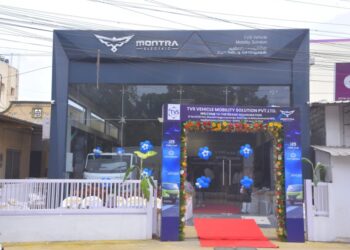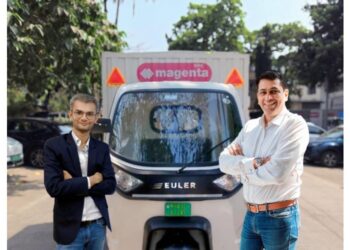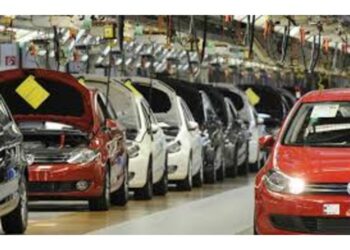NEW YORK – The most important growth driver for the global electric vehicle (EV) battery swapping market for two- and three-wheeler is the expansion of the EV industry. The latter is itself a result of the strong government support in many countries for the adoption of clean-energy transportation. Countries such as China, India, and Japan are notorious for their air pollution, which has prompted the government here to offer a variety of benefits to the manufacturers and buyers of EVs, according to the market research report published by P&S Intelligence.
However, a major restraint in the adoption of EVs is their high costs, which are a result of their expensive batteries. This is ultimately boosting the EV battery swapping market for two- and three-wheeler, as by buying the battery separately, the costs of EVs reduce significantly. Moreover, the electric vehicle supply equipment (EVSE), or charging station infrastructure, is inadequate in most countries. Additionally, charging takes time, from a couple of hours to the entire night, which not everyone on a clock can afford, which further makes battery swapping a preferred option.
Automotive has been one of the hardest-hit industries during the COVID-19 pandemic, with the sale of vehicles coming to naught in many places. This has caused a great loss to the EV battery swapping market for two- and three-wheeler, as with no EV sales, swapping businesses are witnessing ceased operations. After the pandemic ends and industry picks ups, electric three-wheeler sales are expected to be low, as most people are predicted to opt for private conveyance, which would actually benefit electric two-wheeler sales.
In the past, the subscription model bifurcation held the larger share in the EV battery swapping market for two- and three-wheeler, based on service type. The subscription swapping model allows users to take the EV battery on lease, as well as leads to low swapping expenses and, hence, long-term affordability of EVs.
The Li-ion bifurcation, on the basis of battery type, is projected to witness the higher CAGR in the battery swapping market for electric two and three-wheeler industry in the years to come. Due to their higher energy density, falling prices, and environment-friendly disposal advantages, the use of Li-ion batteries in electric two- and three-wheelers is increasing rapidly. In APAC, Europe, and North America, Li-ion batteries account for 65%, 97%, and 92% of all EV batteries in use, respectively.
In the immediate future, the EV battery swapping market for two- and three-wheeler would continue to be dominated by the two-wheeler bifurcation, under segmentation by vehicle type. Electric two-wheeler manufacturers are focusing strongly on offering consumers a longer driving range, by making the vehicles compatible with the battery swapping technology. Additionally, once the lockdown is lifted, people are expected to prefer private transportation to shared mobility, for a lower risk of infection spread.
APAC has been the largest EV battery swapping market for two- and three-wheeler in the past. The huge sales of EVs in India and China and successful incorporation of the swapping technology in Taiwan have made APAC the industry leader. All these countries have a high population density, and the customer base for two-wheelers is also rather large here, as a significant chunk of the people is middle-class.
The EV battery swapping market for two- and three-wheeler is set to boom considerably in Europe and Rest of the World. While the scooter sharing concept is quite popular in Europe, Africa is witnessing a rapidly increasing preference for the battery swapping model for keeping the EVs running.
Partnerships Paving Way for Companies to Grow in Industry
In the EV battery swapping market for two- and three-wheeler, where the challenges are plenty, owing to its largely unorganized nature, major EV manufacturers, power distribution companies (DISCOMs), government agencies, and battery swapping and charging solution providers are entering into partnerships with each other. The following are some prominent ideas behind such industry growth strategies:
- Raising funds to develop feasible electric two-wheeler solutions
- Securing adequate space and consistent electricity supply to carry out EV charging and battery swapping operations
- Expanding the portfolio of the EV brands the battery swapping services are provided for
- Getting intelligence on the most feasible areas across cities for setting up swapping stations
- Installing charging and battery swapping infrastructure at petrol pumps and gas stations
The major players in the global EV battery swapping market for two- and three-wheeler are Amara Raja Batteries Ltd., ACME Cleantech Solutions Pvt. Ltd., BattSwap Inc., Ample, Ola Electric Mobility Pvt. Ltd., Exicom Tele-Systems Ltd., Divish Mobility Pvt. Ltd. (BatteryPool), Fortum India Pvt. Ltd., Flymove Holding Ltd., GreenPack GmbH, Gogoro Inc., Leo Motors Inc., Immotor Inc., Panasonic India Pvt. Ltd., Lithion Power Pvt. Ltd., Pushme Inc., Piaggio Vehicles Pvt. Ltd., and SUN Mobility Pvt. Ltd.
For more information please visit: https://www.psmarketresearch.com













